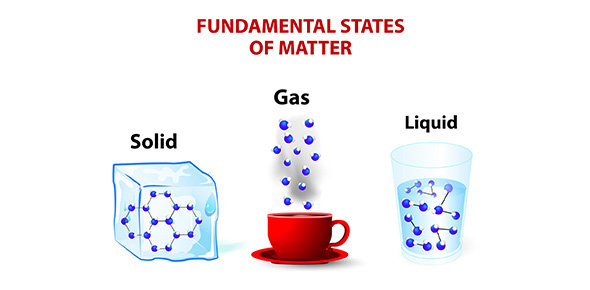Matter-canossa-calamba

This quiz is intended for all first year students of Canossa Academy-Calamba. You only have one week to answer this quiz. (October 31-November 7, 2010). You only have 60 minutes to answer this 20-item test.
Make sure to send the certificate of completion after taking this quiz.
Thank you.
- 1.
1. Hydrogen is the most abundant element in the universe. The atomic number of hydrogen is:
- A.
1
- B.
2
- C.
3
- D.
4
Correct Answer
A. 1 -
- 2.
2. Which scientist first proposed that atoms are indivisible particles of matter, unable to be seen by the naked eye?
- A.
Democritus
- B.
Leucippus
- C.
Empedocles
- D.
Aristotle
Correct Answer
B. Leucippus -
- 3.
3. If you didn't know the atomic number for hydrogen, you might want to try to commit it to memory. Another important element is carbon, which is found in all organic molecules. How many protons are in an atom of carbon?
- A.
4
- B.
5
- C.
6
- D.
7
Correct Answer
C. 6 -
- 4.
4. You need oxygen to breathe. Pure oxygen is most commonly found as a molecule, O2, or sometimes as ozone, O3. What is the atomic number of oxygen?
- A.
9
- B.
8
- C.
7
- D.
6
Correct Answer
B. 8 -
- 5.
5. The second most abundant element in the universe is helium. Do you know how many protons it has?
- A.
2
- B.
4
- C.
6
- D.
8
Correct Answer
A. 2 -
- 6.
6. The changing of a solid to a liquid is called __________.
- A.
Condensation
- B.
Sublimation
- C.
Soldification
- D.
Liquefication
Correct Answer
D. Liquefication -
- 7.
7. Which model of the atom is denoted as the "plum pudding" or "chocolate chip" model?
- A.
Rutherford's Model
- B.
Thomson's Model
- C.
Dalton's Model
- D.
Bohr's Model
Correct Answer
B. Thomson's Model -
- 8.
8. Which state of matter spreads itself thinner and thinner until it fills the entire volume of the container irrespective of its size?
- A.
Solid
- B.
Liquid
- C.
Gas
- D.
Plasma
Correct Answer
B. Liquid -
- 9.
9. I can easily compress the water in a jar to reduce its ________.
- A.
Mass
- B.
Weight
- C.
Area
- D.
Volume
Correct Answer
D. Volume -
- 10.
10. Characteristics that can only be seen when the material changes and new materials are formed.
- A.
Physical
- B.
General
- C.
Special
- D.
Chemical
Correct Answer
D. Chemical -
- 11.
11. We measured volume in class by using which method?
- A.
Water replacement method
- B.
Water displacement method
- C.
Rock desiplacement method
- D.
Floatation method
Correct Answer
B. Water displacement method -
- 12.
12. The temperature at which a substance changes from a liquid to a gas.
- A.
Condensation point
- B.
Melting point
- C.
Boiling point
- D.
Freezing point
Correct Answer
C. Boiling point -
- 13.
13. Density is a measure of how much mass is contained in a given unit ________.
- A.
Density
- B.
Mass
- C.
Volume
- D.
Weight
Correct Answer
C. Volume -
- 14.
13. What subatomic particle represents the "plums" or the "chips" in the plum-pudding model by J.J. Thomson?
- A.
Boson
- B.
Electron
- C.
Neutron
- D.
Proton
Correct Answer
B. Electron -
- 15.
14. About 70% of air is nitrogen. Ionized nitrogen is responsible for the orange-red, blue-green, blue-violet, and deep violet colors of the aurora. Do you know its atomic number?
- A.
5
- B.
7
- C.
9
- D.
11
Correct Answer
B. 7 -
- 16.
15. The chemical name of Mg3(PO4)2 is:
- A.
Magnesium phosphate
- B.
Manganese phosphate
- C.
Magnesium phosphite
- D.
Manganese phosphite
Correct Answer
A. Magnesium phosphate -
- 17.
As a student, give at least 5 ways on how matter affects your day-to-day activities.
Quiz Review Timeline +
Our quizzes are rigorously reviewed, monitored and continuously updated by our expert board to maintain accuracy, relevance, and timeliness.
-
Current Version
-
Jan 18, 2013Quiz Edited by
ProProfs Editorial Team -
Oct 30, 2010Quiz Created by
Gk487
- Acceleration Quizzes
- Acoustic Quizzes
- Chapters Of Physics Quizzes
- Distance Quizzes
- Electrolysis Quizzes
- ESD Quizzes
- Frequency Quizzes
- Light And Reflection Quizzes
- Logic Gate Quizzes
- Magnetic Field Quizzes
- Momentum Quizzes
- Motion Quizzes
- Online Physics Quizzes
- Optics Quizzes
- Physics Of Sound Quizzes
- Practice Physics Quizzes
- Properties Of Matter Quizzes
- Quantum Quizzes
- Quantum Physics Quizzes
- Reflection Quizzes
- Refraction Quizzes
- Secondary 3 Physics Quizzes
- Sound Quizzes
- Speed Of Light Quizzes
- Thermodynamics Quizzes
- Velocity Quizzes
- Work And Energy Quizzes
 Back to top
Back to top


